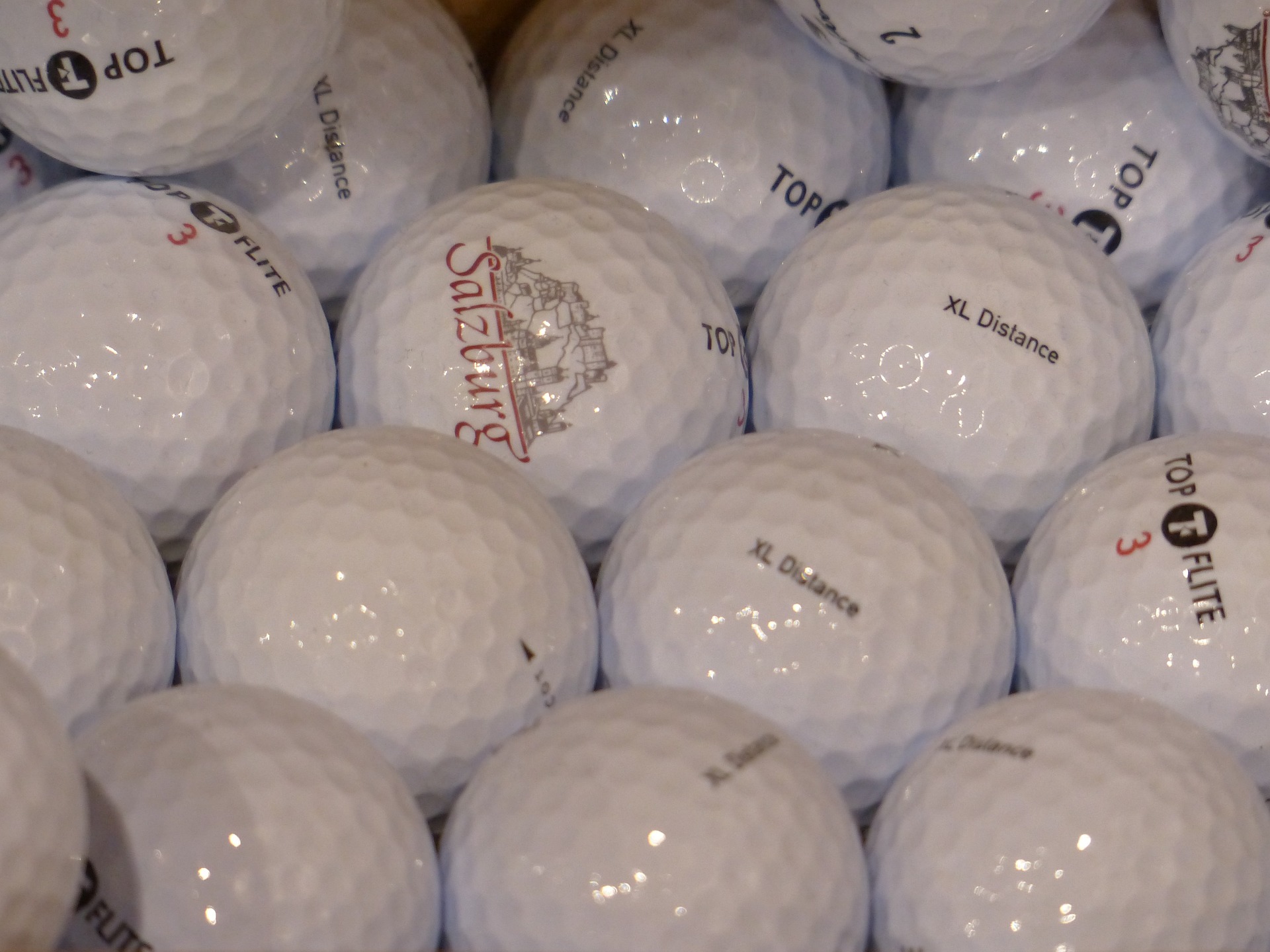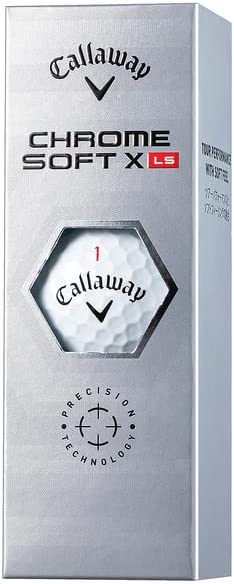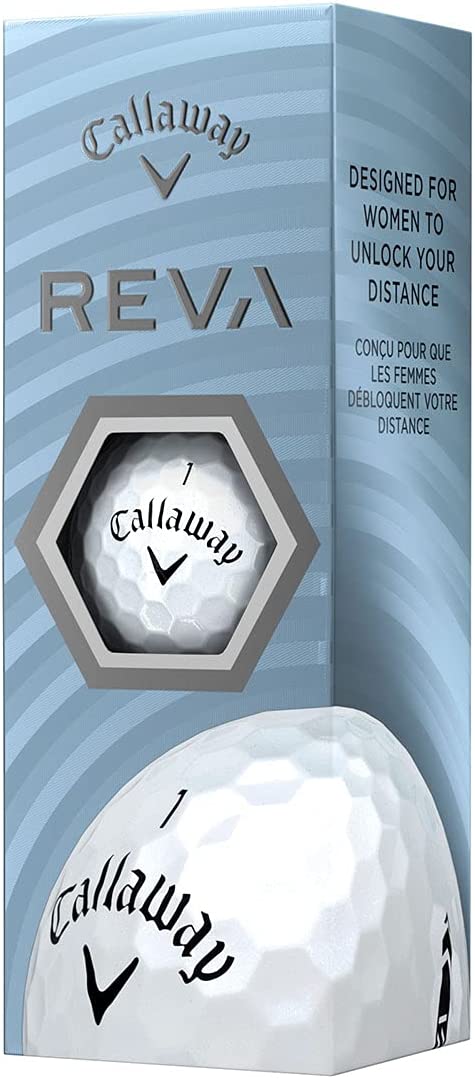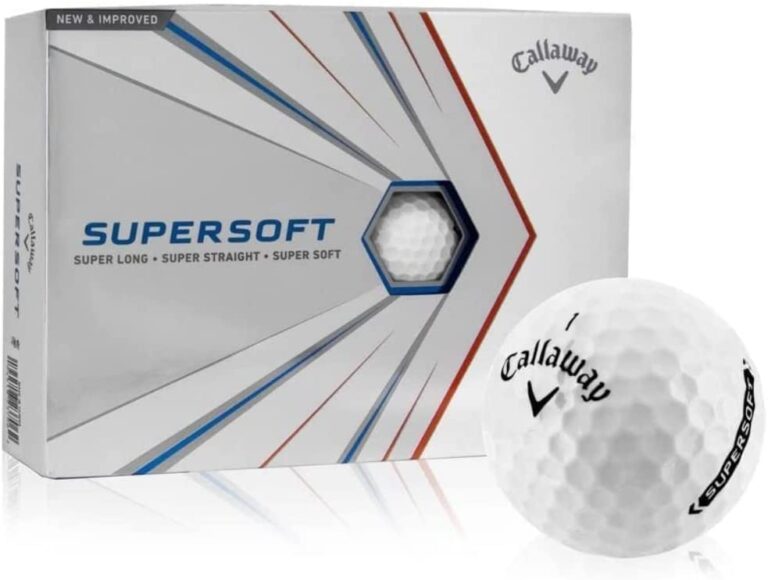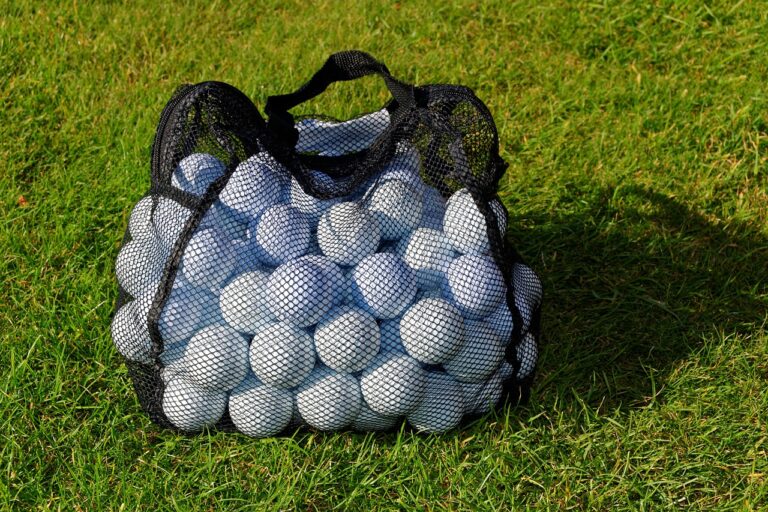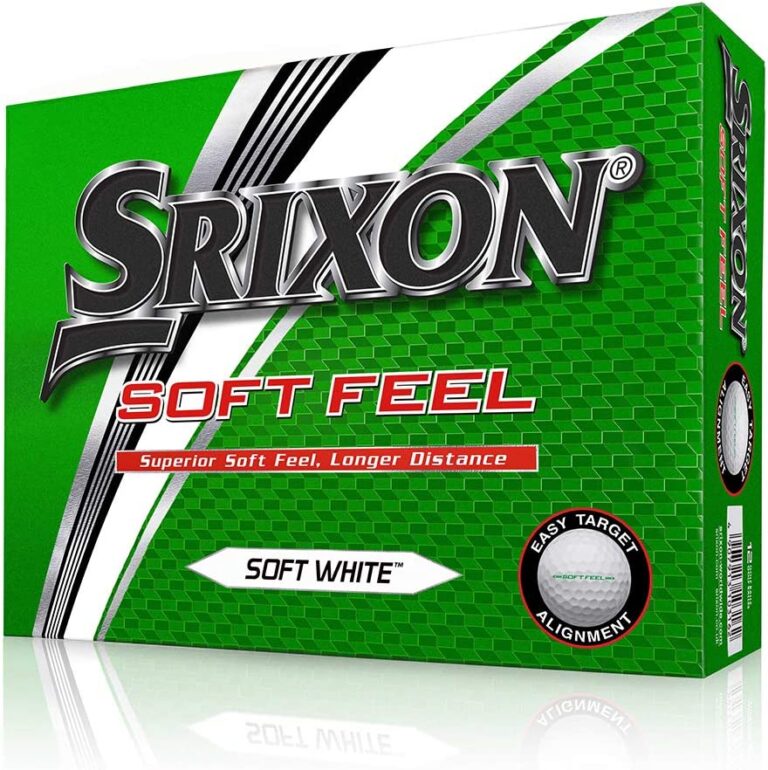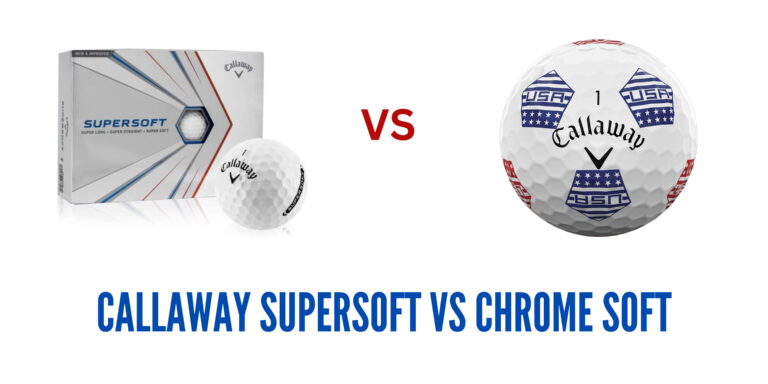Best golf balls for slow swing speed.
If you’re a golfer with a slow swing speed, you know that it can be tough to hit the ball as far as you’d like. But there are a few things you can do to improve your distance, and one of the most important is choosing the right golf ball.
There are specific golf balls designed for slower swings that can maximize your game. In this guide, we’ll cover the best golf balls for slow swing speed.
Understanding Swing Speed.

Swing speed in golf refers to the velocity at which the golfer swings their club at the point of impact with the ball. It’s measured in miles per hour (mph) and plays a significant role in determining how far the golf ball travels.
Importance of Swing Speed.
Swing speed is a crucial component of a golfer’s game. The faster a golfer can swing their club, the further the ball will go. Higher swing speeds often translate to longer shots and drives. However, it’s important to maintain control and accuracy while striving for a higher swing speed.
Factors Affecting Swing Speed.
Swing speed can be affected by a variety of factors, including:
Technique: A proper golf swing is a complex motion that involves the whole body. Even slight changes in your swing mechanics can significantly impact your swing speed.
Physical Fitness: Strength, flexibility, and coordination all contribute to swing speed. Regular fitness and strength training can lead to improvements in these areas and therefore increase your swing speed.
Equipment: The type of club used can also impact swing speed. Different clubs are designed to maximize speed and power based on the golfer’s skill level and physical attributes.
Age and Skill Level: As we age, our physical abilities can decrease, leading to a slower swing speed. In addition, inexperienced golfers tend to have slower swing speeds compared to seasoned players.
The Impact of Golf Balls on Swing Speed.
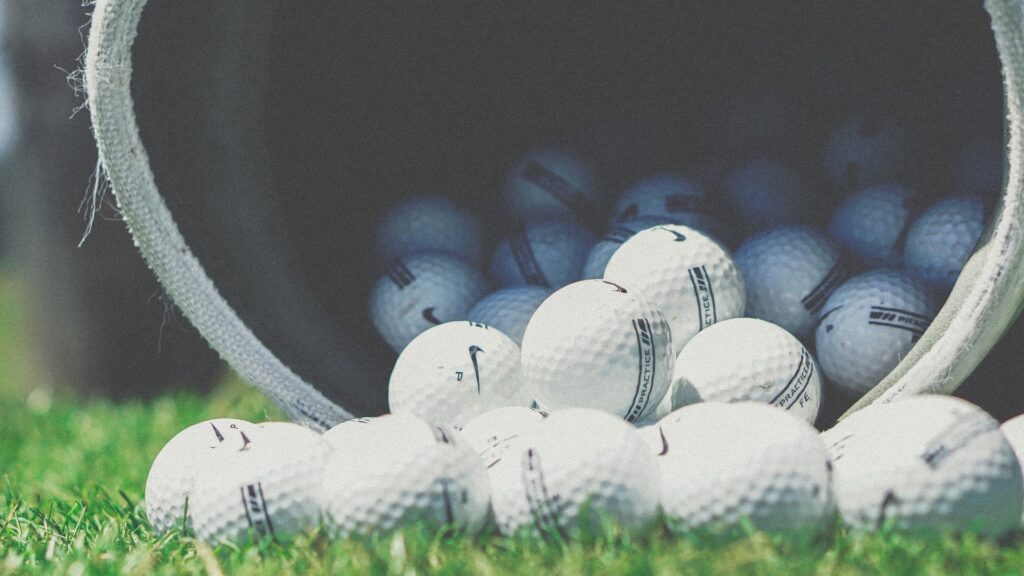
While the golf ball itself doesn’t directly affect your swing speed, the type of golf ball you use can significantly influence the distance and trajectory of your shot, which are key elements influenced by your swing speed. Let’s dive deeper into this topic:
The design and construction of a golf ball can either compliment or hinder your swing speed, affecting the overall distance your ball travels. Various factors come into play:
Compression: Golf balls are designed with varying compression ratings. A golf ball’s compression affects how it reacts to the impact from the club head. Lower compression balls are more suitable for golfers with slower swing speeds, as these balls can be fully compressed upon impact, leading to maximum energy transfer and subsequently longer distances.
Construction: Golf balls can have anywhere from one to five layers, each designed for different purposes. Multi-layered golf balls usually offer more spin control and feel, but they require higher swing speeds to fully engage all layers and perform optimally.
Dimple Design: The dimple pattern on a golf ball affects its aerodynamics. Dimples create turbulence in the boundary layer of air around the ball, reducing drag and allowing the ball to fly further. Some designs can aid golfers with slower swing speeds by maximizing lift and minimizing drag.
Cover Material: The material of the golf ball cover affects both feel and spin. Softer cover materials like urethane can offer more spin and control but often require higher swing speeds to maximize these benefits. Conversely, harder cover materials like Surlyn can be more durable and offer less spin, which can be more forgiving for golfers with slower swing speeds.
Choosing the right golf ball that matches your swing speed can help you improve your game by optimizing for distance and control based on your specific needs.
Characteristics of the Best Golf Balls for Slow Swing Speed.
When it comes to selecting the best golf balls for slower swing speeds, several key characteristics should be considered. These characteristics optimize the ball’s performance for slower swings, leading to increased distance and control.
Lower Compression.
Low-compression golf balls are more suited for players with slower swing speeds. These balls have a compression rating usually below 80, which allows the ball to compress, or ‘squish,’ more upon impact.
This increased compression facilitates a more efficient transfer of energy from the club to the ball, leading to greater distance even with slower swing speeds.
Soft Feel.
A golf ball with a soft feel can offer a couple of benefits to the slow-swing speed golfer. Firstly, a softer ball will typically provide more control around the greens, which can be advantageous for less-powerful players who rely more on their short game.
Secondly, soft feel golf balls can often provide more spin, which can help keep the ball in the air longer and thus increase distance.
High Launch.
Golf balls designed to have a high launch can be particularly beneficial for golfers with slower swing speeds. These balls have a construction that promotes a higher ball flight trajectory, allowing the ball to stay in the air longer, which can lead to more distance.
More Spin.
While too much spin can cause issues with control and accuracy, an optimal amount of spin can benefit players with slower swing speeds. Backspin can keep the ball in the air for a longer period, leading to increased distance. Furthermore, more spin can provide better control, particularly when approaching the green.
All these features, when combined, can make a significant difference in the game of a golfer with a slower swing speed. When choosing a golf ball, it is important to consider these factors to ensure you select a ball that complements your style and helps improve your game.
5 Best Golf Balls for Slow Swing Speed.
Selecting the right golf ball can significantly enhance your performance, especially if you have a slower swing speed. Here, we’ve handpicked the top five golf balls that are designed to optimize distance and control for slower swings.
1. Titleist DT TruSoft
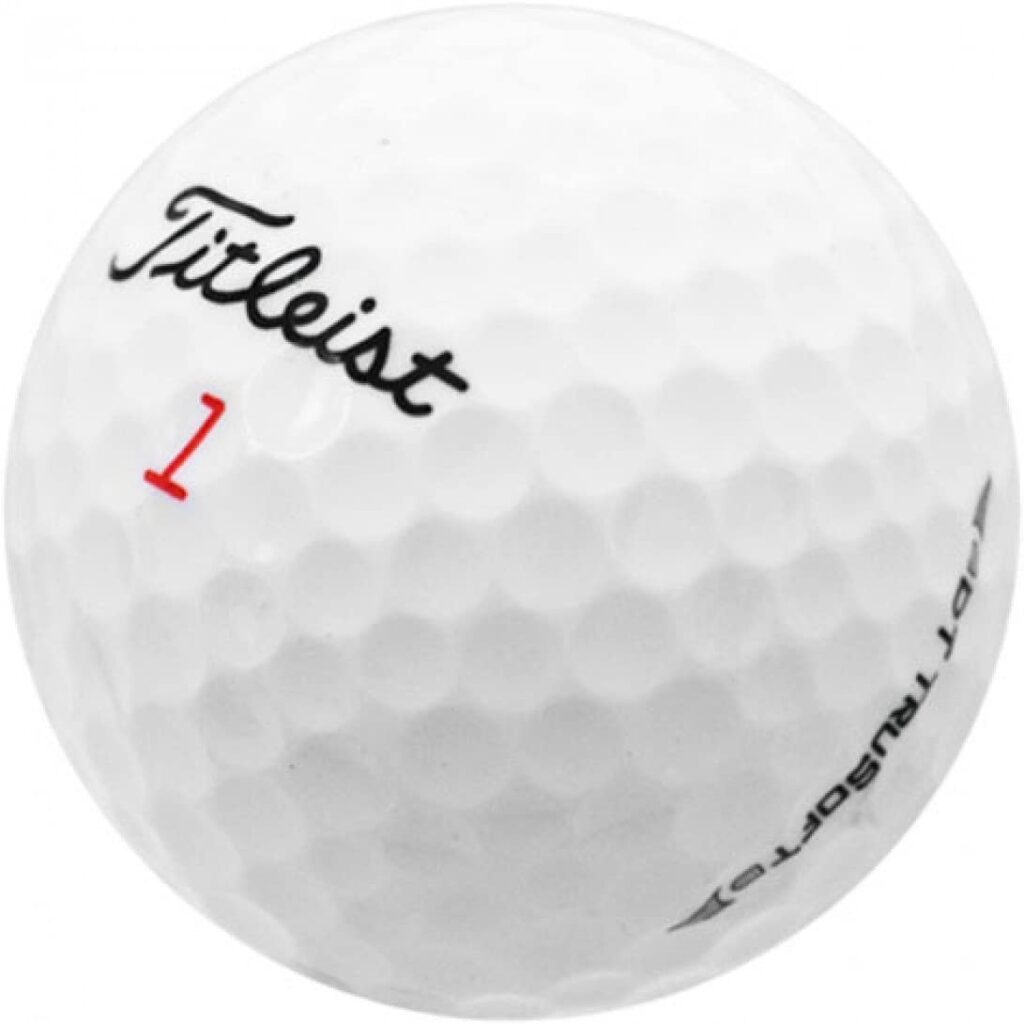
The Titleist DT TruSoft golf balls offer an impressive balance of soft feel and distance. They have lower compression, making them perfect for slower swing speeds.
These balls also boast an advanced TruTouch Core and TruFlex Cover, which contribute to longer distance and excellent short-game performance.
Key Features.
- TruTouch Core: The innovative TruTouch core is designed to lower spin rates for more distance off the tee.
- TruFlex Cover: The TruFlex cover provides a very soft feel for better control, especially around the greens.
- Advanced Aerodynamics: The design includes a 376 tetrahedral dimple design for advanced aerodynamics, allowing for a consistent flight path.
- Low Compression: Lower compression suits slower swing speeds, optimizing energy transfer at impact for greater distance.
Pros.
- Distance: The low spin rates result in longer distances off the tee, especially for golfers with slower swing speeds.
- Feel: The TruFlex cover offers a soft feel, which can improve control, particularly in the short game.
- Consistency: The advanced aerodynamic design ensures consistent and stable flight, which can improve shot accuracy.
Cons.
- Durability: Some golfers have noted that the soft cover can be prone to scuffs and cuts, reducing the ball’s lifespan.
- High Spin Rates: Although beneficial for many players, those who struggle with hooks or slices might find the higher spin rates challenging to manage.
1. Callaway Supersoft
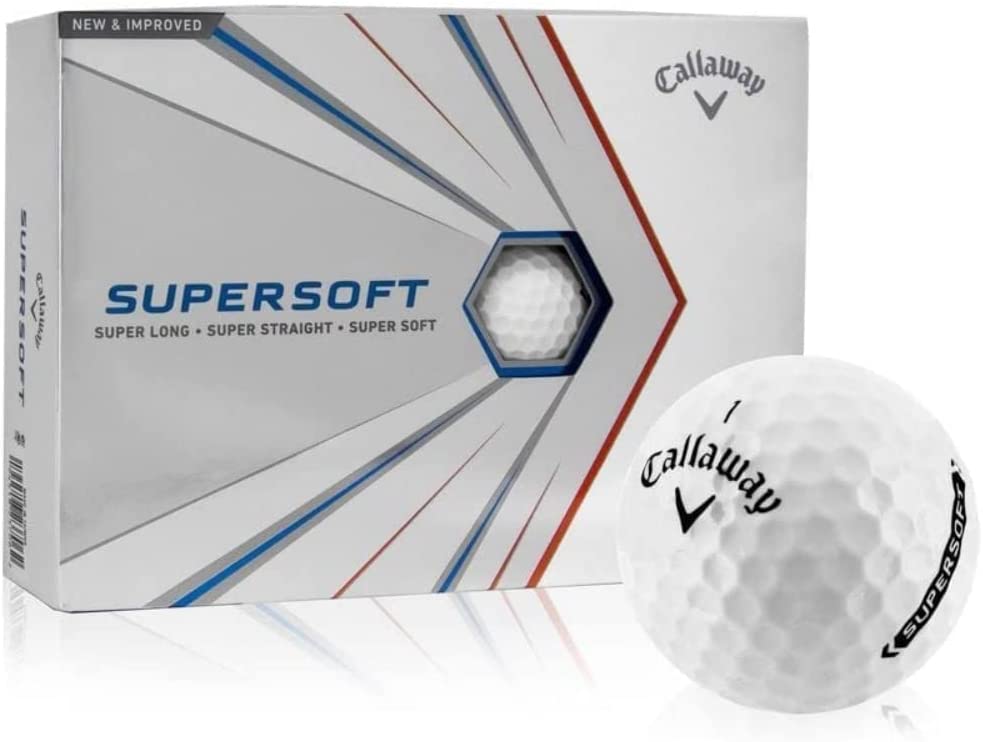
As the name suggests, the Callaway Supersoft golf balls offer a soft feel thanks to their ultra-low compression core. This softness allows for more deformation at impact, leading to better energy transfer and therefore more distance. The ball also has a low spin rate which can help reduce hooks and slices.
Key Features
- Ultra-Low Compression Core: The Supersoft’s ultra-low compression core promotes more ball speed and increased accuracy off the tee.
- Soft Trionomer Cover: This soft cover promotes low spin for longer, straighter flights on full shots.
- Low-Drag Hex Aerodynamics: Callaway’s patented Hex Aerodynamics reduces drag and enhances lift for increased carry and longer distance.
- Low Spin: The low spin characteristic of the Supersoft reduces slices and hooks.
Pros
- Distance: The ultra-low compression core aids in achieving more distance, even with slower swing speeds.
- Control: The soft cover enhances feel and control, particularly in the short game.
- Straight Flight: The low spin reduces the chances of hooks or slices, promoting a straighter flight path.
Cons
- Feel: Some golfers find the ball too soft, particularly those who prefer a firmer feel.
- High Spin Rates Around Greens: While the Supersoft is designed for low spin off the tee, some players might find it generates too much spin around the greens, making control a bit challenging.
3. Srixon Soft Feel.
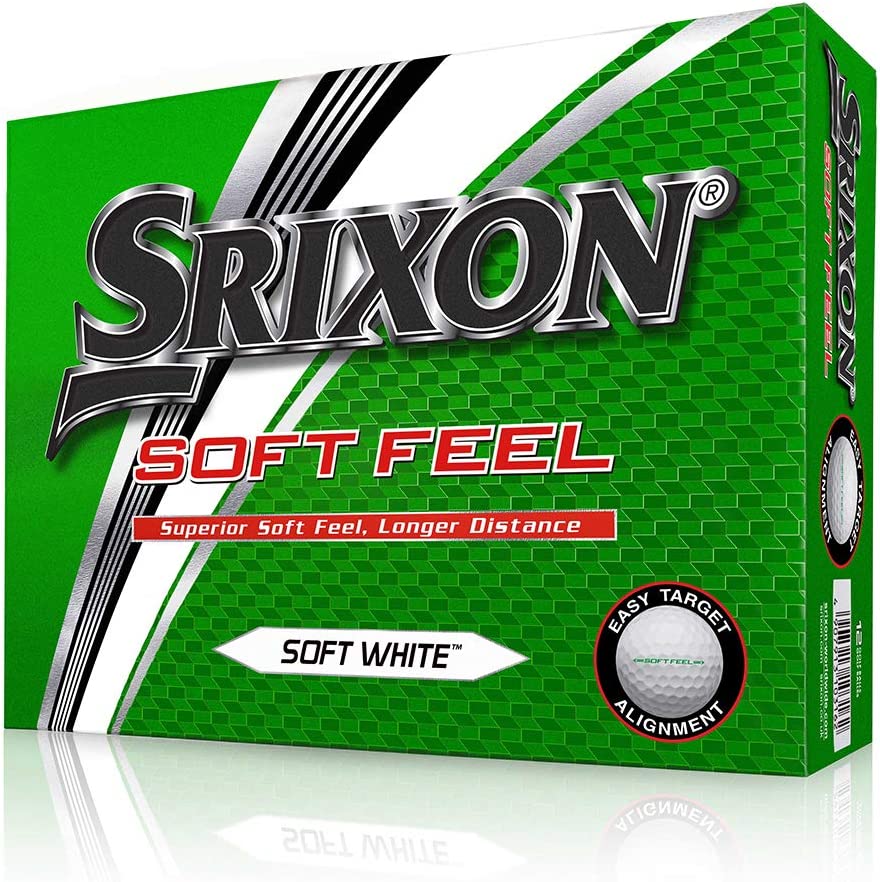
The Srixon Soft Feel golf balls provide exceptional distance and increased control around the greens. They are designed with a softer, lower compression core and a softer, thinner cover. These two features combine to produce a high-launch and low-spin trajectory off the tee, making them an ideal choice for golfers with slower swing speeds.
Key Features
- Energetic Gradient Growth Core: The core starts soft towards the center and gradually becomes firm around its outer edges, providing a high-launch, low-spin trajectory.
- 338 Speed Dimple Pattern: This advanced pattern enhances the aerodynamics, maximizing distance and control.
- Softer, Thinner Cover: The cover is designed to maximize spin, giving you more control around the greens.
Pros
- Distance: The Energetic Gradient Growth Core aids in achieving more distance, particularly beneficial for golfers with slower swing speeds.
- Control: The softer, thinner cover improves feel and control, especially for the short game.
- Stable Flight: The 338 Speed Dimple Pattern reduces drag and wind resistance, resulting in a stable and consistent flight.
Cons
- Durability: Like other soft balls, these may not be as durable as some golfers would like, and can show wear and tear after a few rounds.
- Too Much Spin for Some Players: While the increased spin can improve control around the greens, some players might find it hard to control if they are used to a lower-spin ball.
4. Bridgestone e6 Soft.
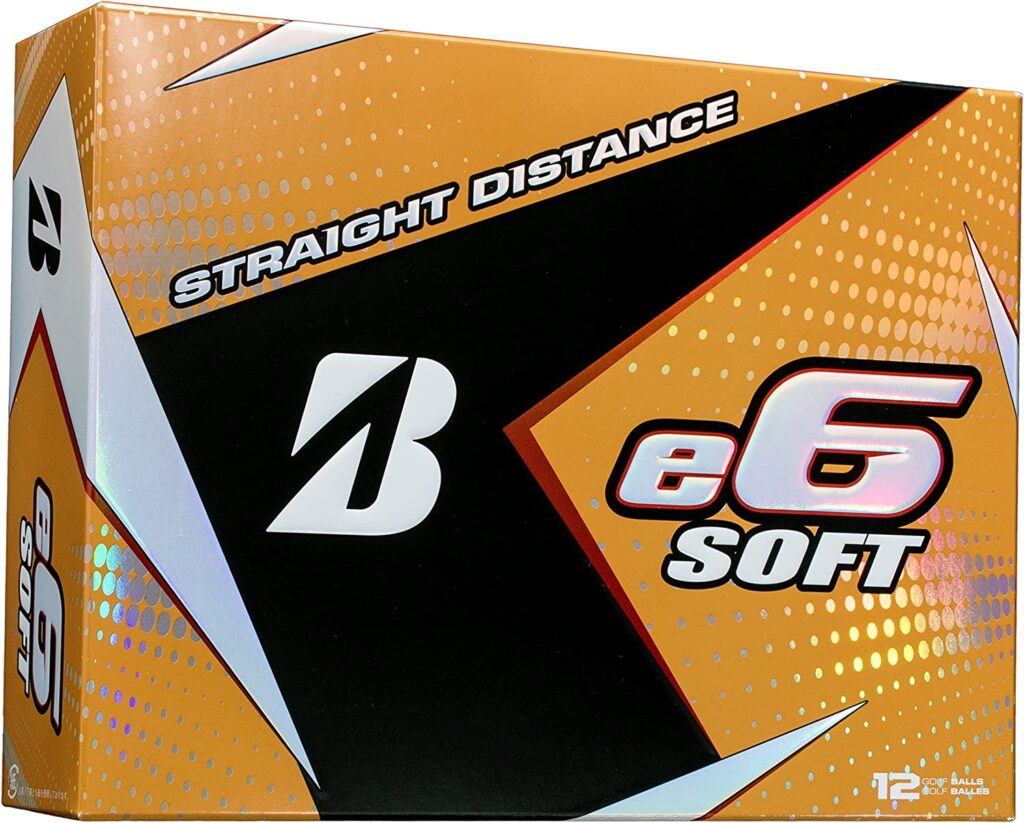
The Bridgestone e6 Soft golf balls are built with an advanced mantle and cover, which work together to provide impressive approach and greenside performance.
The golf ball’s low compression core is designed to activate at lower swing speeds, adding a boost of distance for slower swingers.
More Comprehensive Review Here
Key Features
- Advanced Mantle Layer: This feature helps transfer more energy at impact, which translates into greater distances, particularly for players with slower swing speeds.
- Delta Dimple Pattern: The unique dimple design reduces drag and optimizes aerodynamics for straighter shots.
- Soft Surlyn Cover: This cover material strikes a balance between soft feel and durability.
Pros
- Distance: The advanced mantle layer and soft cover work together to promote greater distance.
- Straight Flight: The Delta Dimple Pattern contributes to straighter shots by minimizing air resistance.
- Durability: The Surlyn cover offers a higher degree of durability compared to many other soft golf balls.
Cons
- Feel: Some golfers may find the ball to be too firm, especially those who prefer a very soft feel.
- Greenside Control: While the e6 Soft performs well off the tee, some golfers have noted that it lacks a bit of control on the greens compared to some other soft golf balls.
Wilson Duo Soft+
The Wilson Duo Soft+ golf balls are some of the lowest compression balls on the market. They are known for their exceptionally soft feel and their ability to generate greater distances with slower swing speeds. The shallow dimple pattern also enhances the stability of the ball in flight.
Key Features
- Lowest Compression: With a compression of 35, the Duo Soft+ has one of the lowest compressions in the market, making it ideal for golfers with slow to moderate swing speeds.
- Shallow Dimple Pattern: The design includes a shallower dimple pattern, which contributes to a stable, straight flight.
- Soft Feel: This golf ball offers a remarkably soft feel, enhancing touch and control around the greens.
Pros
- Distance: The low compression allows for optimal energy transfer, helping golfers with slower swing speeds achieve greater distances.
- Straight Flight: The shallow dimple pattern aids in maintaining a straight and stable flight.
- Feel: The Duo Soft+ is known for its soft feel, which can significantly improve control in the short game.
Cons
- Durability: Due to the very soft feel, some players have noticed that the ball can scuff and cut easily.
- High Spin Rates: While beneficial for many players, those who struggle with hooks or slices might find the higher spin rates challenging to manage.
FAQs
How can I know my swing speed?
You can determine your swing speed by using a launch monitor or radar device, or you can also estimate it based on the average distance you hit your drives.
Can a golf ball really affect my swing speed?
The golf ball itself doesn’t affect your swing speed, but it can affect the results you get from your swing. Golf balls with certain features can help maximize distance and control for slow swing speed players.
Are softer golf balls better for slow swing speeds?
Yes, softer golf balls can be better for slow swing speeds because they can provide more spin and better feel.
What does ‘low compression’ mean in golf balls?
Low compression means that the golf ball compresses or ‘squishes’ more upon impact. This helps transfer more energy from the club to the ball, beneficial for slow swing speeds.
Is it necessary to match my golf ball to my swing speed?
While it’s not necessary, matching your golf ball to your swing speed can help you improve your game. The right golf ball can maximize your distance and provide better control.
Conclusion
Choosing the right golf ball for your swing speed can significantly impact your game. Each of the golf balls listed above offers unique advantages for golfers with slower swing speeds, from lower compression to more spin and a softer feel.
Remember, the best way to decide is to try them out for yourself to see which one complements your play style the most.

